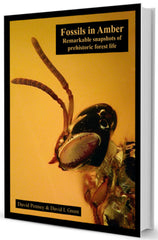16 million-year-old poisonous plant fossilized in amber
Posted by David Penney on
The discovery of the first-ever fossil specimens of an “asterid” flowering plant was published yesterday in the journal Nature Plants. The perfectly preserved fossilised flowers were found in 16 million-year-old Dominican amber and belong to the genus Strychnos, which ultimately gave rise to some of the world’s most famous poisons, such as strychnine and curare.

16 million-year-old Strychnos flower in Dominican amber
Researcher George Poinar, Jr., a courtesy professor in the College of Science at Oregon State University, said, “Species of the genus Strychnos are almost all toxic in some way. Each plant has its own alkaloids with varying effects. Some are more toxic than others, and it may be that they were successful because their poisons offered some defense against herbivores. Today some of these toxins have been shown to possess useful and even medicinal properties.”
This discovery represents another example of the amazing diversity of fossils preserved in amber and what they can tell us about the evolutionary history of life on Earth since the Cretaceous period, where the oldest amber deposits with diverse fossilised inclusions appear. Several inclusions (arthropods) have been found in Triassic amber from Italy, but as yet none of the younger Jurassic amber deposits have yielded any fossilised insects.
To find out more about this remarkable mode of preservation check out our varied titles on this subject – clicking the cover will take you to the relevant page where you can find out more information and purchase a copy at a discounted rate (the titles Fossil Inclusions in Baltic Amber and Amber Palaeobiology are currently in preparation - the latter is due to be released in a few months time).
Share this post
- 0 comment
- Tags: New research, News
0 comment




